East-meets-West book ‘Kuni’ explores rural-urban connections
|
Published: 05-05-2025 3:00 PM
Modified: 05-05-2025 6:53 PM |
Spring is bringing trees and yards and farms to life all around us. In this season of rebirth, Shantigar and Raven Used Books are bringing a visionary thinker about land and community (and a delightful human being) to our area.
On Saturday, May 10, at 6:30 p.m., Richard McCarthy will be at the bookstore on Conway Street in Shelburne Falls to talk about “Kuni: A Japanese Vision and Practice for Urban-Rural Reconnection” (North Atlantic Books, 176 pages, $16.95).
McCarthy co-wrote the book with Tsuyoshi Sekihara, whom he has met in person only a few times but with whom he has forged a close bond.
“Kuni” means nation or community. Sekihara came up with the idea of reinventing what community means a few decades ago when he moved back from Tokyo into the semi-rural area of Japan in which he was born.
According to the book, he almost accidentally found ways in which people from urban and rural areas can bond by working together in medium-size areas, not tiny towns but not big cities either.
I spoke with McCarthy last week about Kuni, about his relationship with Sekihara, and about his view of the urban-rural connection.
McCarthy has for many years been involved in farmers markets, both locally in New Orleans, where he used to live, and internationally. He is currently the president of the World Farmers Markets Coalition and is the former executive director of Slow Food USA.
He told me that he became interested in farmers markets after he and his wife had worked on social-justice issues, specifically on the defeat of the neo-Nazi David Duke in Duke’s quest for the Louisiana governorship.
Article continues after...
Yesterday's Most Read Articles
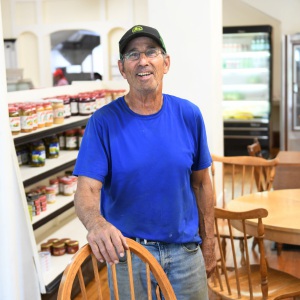 ‘We’re trying a new adventure’: International Cafe and Deli opens in South Deerfield
‘We’re trying a new adventure’: International Cafe and Deli opens in South Deerfield
 My Turn: A rocky road ahead for Stone Farm Lane proposal
My Turn: A rocky road ahead for Stone Farm Lane proposal
 Slew of write-ins elected in Hawley
Slew of write-ins elected in Hawley
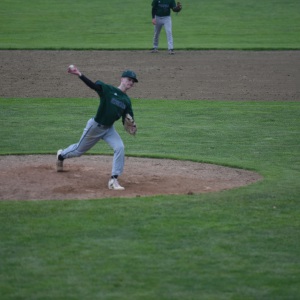 Baseball Roundup: Greenfield’s Caleb Thomas holds Franklin Tech to two hits as Wave advances to Class C semis with 11-1 win
Baseball Roundup: Greenfield’s Caleb Thomas holds Franklin Tech to two hits as Wave advances to Class C semis with 11-1 win
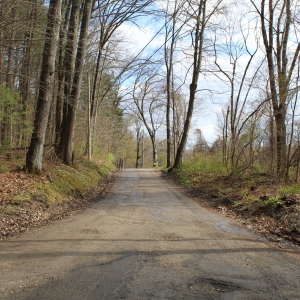 Gov’s supplemental budget includes $7M for unpaved roads
Gov’s supplemental budget includes $7M for unpaved roads
 22-year-old farmworker airlifted to hospital after tractor accident in Sunderland
22-year-old farmworker airlifted to hospital after tractor accident in Sunderland
Duke did not win the election, but after that victory McCarthy and his wife found themselves tired. “We said, ‘Enough with the activist work like that. Let’s do something positive!’” he recalled.
They decided to try community gardening. “Through the gardening, we became involved with our neighbors in new ways,” he told me. “We hooked up with a couple of people who saw the need to revive what was once a thriving market system in New Orleans.
“We were creating a different kind of social contract between urban and rural, between us and our food.”
He remembered that naysayers didn’t think the markets would work, that anyone from the country would bring food to New Orleans.
“What we found instead was the most unlikely marriage between those who are rural and those who are urban, and also those who are on the political left and the political right,” he explained.
“I learned a lot from the farmers who taught me, from the rediscovery of the ancient practice of trade, of direct marketing.”
When he met Sekihara years later, he realized that the two shared a common way of looking at connections between urban and rural people, between the past and the present.
“Love for tradition and rediscovery of the past can be very backward looking or very forward looking,” mused McCarthy.
One of the key aspects of Kuni, one that certainly speaks to people in our area, is the ways in which it brings people from the city and the suburbs to the country as repeat visitors.
These urbanites, much like many of the second-home owners in our area, come to identify with the scenic beauty and the folk traditions of the places to which they return year after year.
In exchange for this renewed sense of identity, the visitors help sustain the local economy and community. They help rural dwellers see the value in some of the practices locals have viewed as holding them back.
Not everything about Kuni can be translated directly into our own area, but the idea has many possibilities. McCarthy noted that he learned after the devastation of Hurricane Katrina in New Orleans that sometimes when the world has been shaken up, people become more receptive to new ideas.
He likened that period of regional uncertainty and change to our current climate of national upheaval.
“This is an interesting moment that we’re in now,” he posited. “I think we’re open to more possibilities than we were before.”
He added ruefully, “Maybe this is me trying to find the silver lining.”
At Raven Used Books, McCarthy will read from the book, talk about urban-rural partnerships, and probably discuss food a bit to anyone who wants to listen.
“For me, food has always been the thing that got me excited about economic possibilities,” he said.
When I asked the author for a recipe, in tribute to “Kuni,” he offered an East-meets-West dish.
“This is a simple recipe that can be prepared with as few as four ingredients (butter, miso, pasta, water), or as many as you like,” McCarthy said. Here he provides options that include cherry tomatoes and sunflower seeds for a summer version.
“I first encountered the dish in Yamagata (in the mountains of Northeast Japan) and was surprised that this fusion of East-meets-West is not already a simple staple in everyone’s ‘What do I prepare for dinner 20 minutes from now?’ Monday meal planning,” he told me.
He calls it “an unusual and reliable dish for entertaining.”
“At one level, this is a simple and obvious blending of fat and umami flavor,” he notes.
“Why butter and not olive oil? In Northern Japan, dairy cows play a significant role in the diet, with butter and cheese (but not the large amounts of dairy we consume in the West). I’ve prepared the dish with olive oil. Though good, the butter gives it an earthier and creamier flavor.
“I was in Yamagata to meet, for the last time, longtime colleague Ryoko Sato. She died of an illness too soon for her to contribute chapters to the book. However, she played an important role in drawing attention to the work of Tsuyoshi Sekihara.
“My wife and I were there to say goodbye to Ryoko and to meet her father, an important member of the literary group of the post-war period, the Peasant Poets. At their house, her parents took us to see and glean samples from their community miso barrel.
“Not only was their miso among the more memorable fermented foods I have ever enjoyed, it was a reminder that traditional ingredients like miso (fermented soy and rice or soy and other grains) originate as practical expressions of community.
“We think of it as that umami ingredient that comes in industrial tubs. It has not always been that way. It need not remain that way.”
McCarthy says he first had this dish prepared with fettucine. Most recently, he made it with tiny ditalini. He liked that version a lot; it could be eaten with a spoon, and the sauce clung nicely to the pasta.
Ingredients:
For the basic dish:
4 tablespoons unsalted butter
3 tablespoons red miso
8 ounces uncooked pasta (or any pasta you prefer)
For the summer edition:
1 pint cherry tomatoes (roasted)
2 tablespoons chopped fresh parsley leaves
1 tablespoon olive oil
½ cup roasted sunflower seeds
Salt and ground black pepper to taste
Instructions:
For the basic version:
Heat a pot of salty water to a rolling boil.
Add any type of pasta and cook until al dente. Remove from heat and drain the pasta, but importantly, save 1 cup of the hot, salty, starchy water for final preparation.
Feel free to use the same pot to prepare the butter and miso. Over a medium flame, add the miso and butter.
Stir the two ingredients, adding the pasta water when the mixture dries out in the heat. Blend into a creamy concoction. Conversely, you can add the butter first, and heat it up until it browns. This yields a richer and nuttier flavor, according to McCarthy.
Return the pasta to the pot and combine the ingredients. Continue to add the remaining water to help coat the pasta. The end result is a moist, creamy pasta, covered with miso and butter.
Serve hot in a serving bowl. Serves four.
For the summer version:
Follow the same instructions, but add the extra step of roasting the tomatoes and sunflower seeds in the oven in the olive oil in advance to provide sweet and bright flavor profiles to the earthy butter miso.
In a small mixing bowl, combine the tomatoes, the parsley, the oil, the seeds, and a pinch of salt and pepper.
Transfer the ingredients to a baking sheet and broil for a few minutes (long enough for the tomatoes to pucker up), or roast at 400 degrees for 30 minutes.
Turn off the oven (or keep it on low heat) to keep the mixture warm until the final plating of the dish.
Serve the butter miso pasta in a serving bowl (as described previously), but here, top it with the roasted or charred tomato concoction.
Tinky Weisblat is an award-winning cookbook author and singer known as the Diva of Deliciousness. Visit her website, TinkyCooks.com.



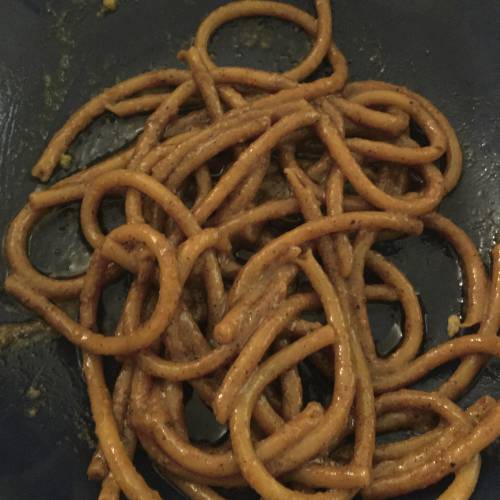
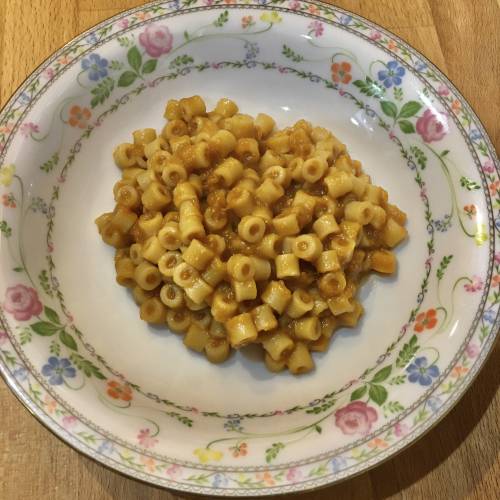





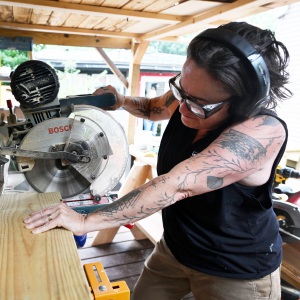 Breaking down barriers in trade work: Collective of LGBTQ handy service workers in high demand
Breaking down barriers in trade work: Collective of LGBTQ handy service workers in high demand The dessert to bring to your next potluck: This easy, elegant torte is a crowd favorite
The dessert to bring to your next potluck: This easy, elegant torte is a crowd favorite Muffins for Presidents Day: A recipe inspired by John and Abigail Adams
Muffins for Presidents Day: A recipe inspired by John and Abigail Adams Speaking of Nature: Signs of a lucky escape: L’il Stumpy’s tail of adventure
Speaking of Nature: Signs of a lucky escape: L’il Stumpy’s tail of adventure
